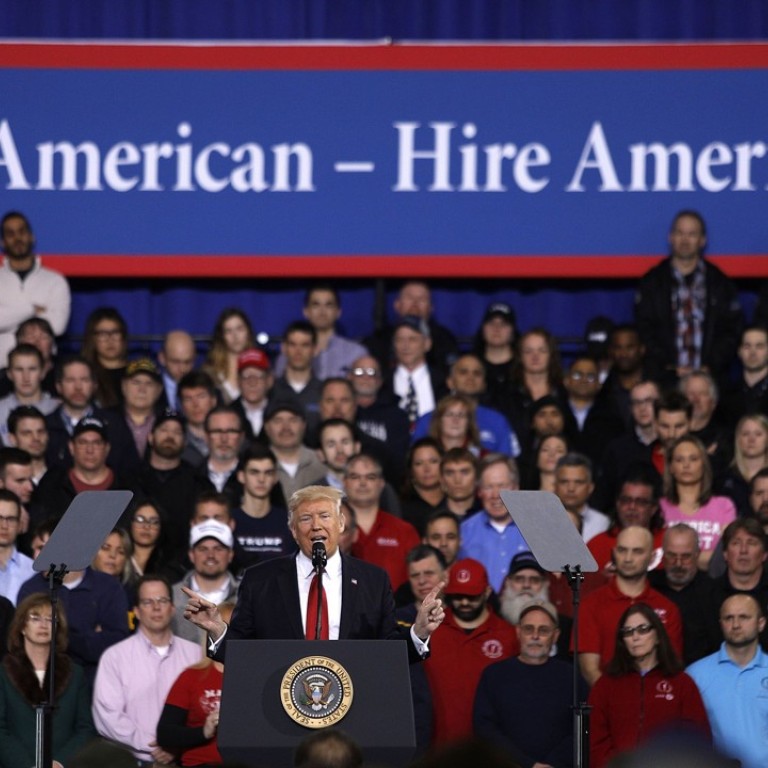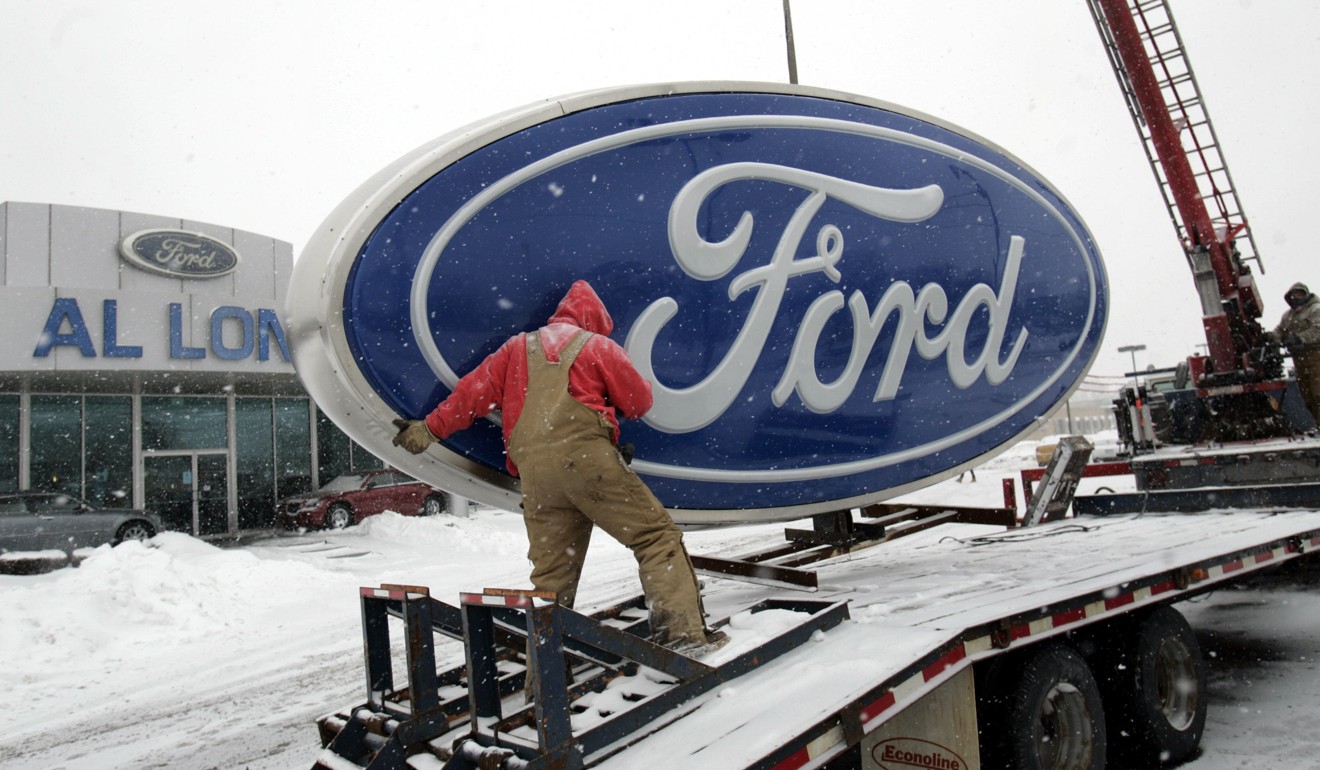
US workforce seems on a roll but the wider economy is labouring
Trump says ‘great’ jobs report shows ‘it is all beginning to work’, but delve a little deeper, and you find a far-from-rosy reality
Friday’s solid headline US jobs data saw some of the country’s equity indices close the week at record highs. Futures traders priced in an even greater likelihood of the Federal Reserve raising US interest rates in June.
President Donald Trump tweeted “great jobs report today – it is all beginning to work”. If only things were that simple.
In fact the yield on the benchmark 10-year US Treasury actually ended up lower on Friday at 2.35 per cent, compared with the 2.356 per cent seen on Thursday, which might seem a little odd if the jobs data was unequivocally strong.
Perhaps fixed-income traders had looked at the US non-farm payroll data in the round rather than just focusing on the headline rise of 211,000 for April, which admittedly both compared favourably to the median forecast of a Bloomberg survey of economists for a 190,000 improvement and stood in contrast to March’s 79,000 print.
But the devil is in the detail.
A key data point which would have influenced economists polled by Bloomberg was the original March figure of 98,000, which has now been revised down by 19,000.
Subtract that revision from April’s 211,000 headline number gives 192,000, which is essentially in line with what the Bloomberg poll had predicted.
In that context, the non-farm payroll figure met expectations but was not stellar.
Of course, the US unemployment rate also hit a 10-year low of 4.4 per cent though the year-on-year increase in average hourly earnings – again hit by revisions – was 2.5 per cent in April, compared to March’s 2.6 per cent and was the lowest such gain since August.
On the subject of earnings, on Thursday the US Labour Department announced a fall in worker productivity in the first quarter and a consequent jump in labour-related costs.
Auto sales slippage, resulting in an inventory build-up, has occurred even though carmakers have raised discounts and included other incentives to draw in buyers – actions that anyway will inevitably affect profit margins
Unit labour costs, a measure of the average cost of labour per single unit of output, increased at a 3 per cent pace in the first quarter, compared to a rise of 1.3 per cent rate in the last three months of 2016.
Non-farm productivity, a measure of hourly output per worker, fell 0.6 per cent year on year in the first three months of 2017.
In fact, US productivity has only risen at an average annual rate of 0.6 per cent over the past five years, in contrast to the 2.1 per cent annualised growth seen during 1947-2016.
It may well be that current measurements of US productivity do not capture the economic gains arising from the digital revolution but, be that as it may, algorithms do not themselves buy goods and there are signs that, even if good numbers of jobs are being created, the US consumer is anyway becoming more circumspect.

On May 2, data released by major carmakers saw falls in US new vehicle sales for April, compared with the same month in 2016. The car industry’s wider travails were such as to impact the recently released advance measure of first-quarter US gross domestic product. That came in as a rise of just 0.7 per cent but would have been 1.2 per cent without the car sector.
Auto sales slippage, resulting in an inventory build-up, has occurred even though carmakers have raised discounts and included other incentives to draw in buyers – actions that anyway will inevitably affect profit margins.
And while President Trump, who said in March that “there is no more beautiful sight than an American-made car”, may not like it, there may have to be extended US car plant shutdowns this summer as carmakers address the inventory accumulation.
But US carmakers are not the only companies facing challenges.
Last month’s global financial stability report by the International Monetary Fund highlighted a sharp decline in US corporates’ average interest coverage ratios generally, an indicator of companies’ ability to repay debt, pointing out the potential risk of defaults if US rates continue to rise.
This is not a risk that can easily be dismissed, given that the market continues to price Fed rate rises and given, as Marc Bentin of Switzerland’s BentinPartner wrote on Friday, Trump’s “coming reflation plan will likely translate into larger US deficits in the coming years just as short-term rates and bond yields will start to creep higher”.
The more the US as a whole needs to borrow, the greater the price the world may demand at a time when it is debatable whether US consumers and corporates can afford higher rates of interest.
Last Friday’s headline US jobs data prompted an approving tweet from Trump but those numbers reveal only part of the story.

